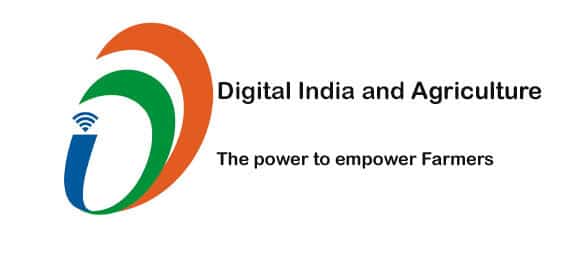The project will benefit small farmers. It seeks to
Low crop productivity & profitability: According to “Situation Assessment of Indian Farmers”, only about 28% of all farmers use any kind of agriculture-related information that is available rather than what they need. While about 72% of farmers do not have any source of information that can help them adapt to the latest technology, most farmers are unable to access credit, insurance and marketing services from the established institutions. This is primarily responsible for farmer’s low crop productivity and profitability. Despite India has the largest irrigated land and ranks second in terms of arable land the yield crops are 20%-40% of the world’s best levels.
Potential of ICT
Information and Communication Technology (ICT) has the potential to revolutionize Indian agriculture in terms of raising crop productivity and profitability per unit area and resources. By June 2014, rural India had about 122.4 million [68.32%] households with mobiles exhibiting mobile connectivity has become a basic service in rural areas. The rural mobile subscriber base is growing twice as faster compared to the urban subscriber base. As of March 2015, the national teledensity was 79% and rural teledensity 46.5%. Telecom Policy aims to increase rural teledensity to 60% by 2017 and 100% by 2020. A study of the IAMAI revealed 80% using it for communications, 67% for online services, 65% for e-commerce and 60% for social networking. Mobile phones can be effectively utilized for purposes including generating, processing, transmitting, disseminating, sorting, archiving and retrieving critical information and data relating to agriculture. Mobile phones are omnipresent and cost-effective means to revolutionize agriculture in India. Several apps are now available and many more can be developed to meet farmers’ following specific needs For India, at a time when national, regional and international research institutes have already developed technologies, farmers need motivation and encouragement to adopt this proven yield-enhancing, cost-efficient and environment-friendly technologies. Acknowledging the slow impact of the ICT initiatives of the government and private sector, the digital India project should pay undivided attention to provide accurate information from authentic sources to farmers on time on various aspects as identified by various field studies, viz.
Details of location-specific crop production technology Economics of crop, livestock and fish farming Authorized sources of timely availability of standard quality inputs [seeds, fertilizers, pesticides, etc.] farm equipment, sprinklers, drippers, among others, along with costs Post-harvest management technology and facilities including transport, storage, processing, preservation, packaging and marketing Commodity prices, weather, measures to minimize the impact of drought and climate change The detailed procedure for availing bank credit, crop and livestock insurance cover, government subsidies, land records, etc. Government’s programs providing subsidy and other facilities to develop irrigation potential, rainwater harvesting, soil and water conservation measures, soil and water testing facilities, prevention and control of pests and diseases, bio-gas, minimum support prices Contract farming, value chain system, warehouse receipt Reclamation of degraded, saline and alkaline land The mechanism to redress grievances. Accordingly, farmers need ICT-enabled portals for following purposes which can be developed, rigorously field-tested and made available to farmers.
Technology: Production-enhancing proved crop-specific technologies [from pre-sowing to harvesting and post-harvest management] based on soil & water analysis. Separate for dryland & irrigated farming focusing efficient use of seeds, fertilizers, water, pesticides, farm equipment & labor; and reclamation of degraded, saline & alkaline land. Production inputs & farm equipment: Crop-specific reasonably priced standard quality production inputs [seeds, fertilizers, pesticides, etc.] and farm equipment and machinery along with sources of availability Post-harvest services: Storage, transport, processing, packaging, Institutional services: Land records, farm credit, insurance, marketing, weather, farmer-producers’ organizations, market yards, procurement centers. Government facilities: Availability of subsidies, assistance available to mitigate effects of climate change, drought, floods, earthquake, cyclones
Institutions: State government’s department of agriculture, state agricultural universities, Krishi Vigyan Kendras, regional research institutes, farmer- producers organizations, corporate/industrial/business houses and multinational companies engaged in manufacturing/production and distribution of farm inputs, farm equipment & machinery, rural financial institutions, insurance companies, among others, have a significant role and added responsibility to contribute their professional knowledge to develop a digital ecosystem for agriculture and make available to farmers. Government’s initiatives: The government has, among others, initiated several measures viz. Focused Attention:
The immediate need is to conduct a nation-wide[separately for each agro-ecological region] evaluation study to assess the impact of ICT initiatives on agriculture already developed and put in place by the government and private sector in respect of [i] number of farmers regularly receiving & using mobile-enabled agricultural information services [ii] feedback from users about content, timeliness, utility, satisfaction, changes required, their grievances [iii] increase in productivity, output and income of benefitted farmers [iv] increase in price realization in farm commodities sold, direct selling without dependence on middlemen [v] reduction in costs of transactions[vi] mechanism to redress grievances. For successfully designing a digital ecosystem for agriculture, the system design should have all the desired features of higher user satisfaction, viz. [i] ease of access [ii] updated content [iii] layout, design, consistent themes [iv] easy navigation [v] higher interactivity [vi] access through multiple media (particularly voice) [vii]higher use of non-textual information [viii]language options[ix]lower cost of transaction. Regulatory & Development Authority needs to be in place to ensure [i] increase in farmers’ easy, timely and reliable access to agricultural information system [as per farmers’ needs] throughout the country in a systematic & planned manner [ii] development of need-based appropriate digital models for agriculture under public & private sector which conform BIS & available at an affordable cost[iii] improving general and digital literacy and computer skill and digital infrastructure in rural India in line with digital India vision and [iv] prevention of fake models and fraudulent practices
